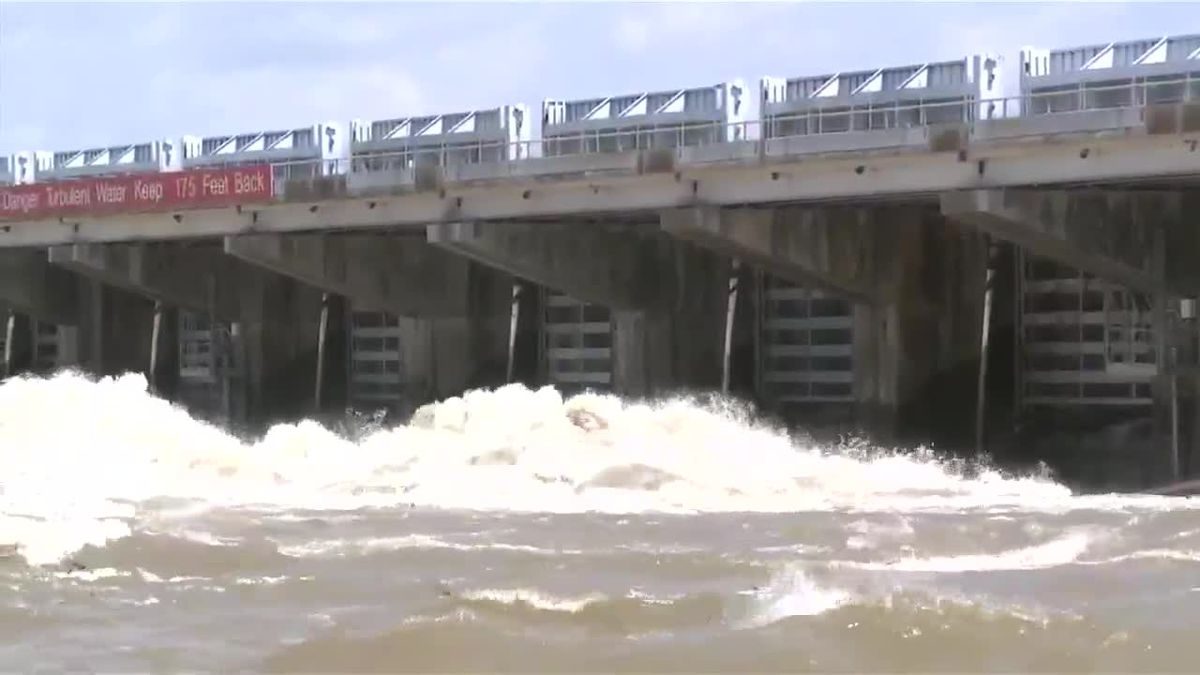
© WVUE
Water from the Bonnet Carre Spillway is devastating the Mississippi Sound without benefit to its citizens, Coastal authories said in a meeting Tuesday (May 28).
The leaders came together in Biloxi to learn how the fresh water impacts the sound and brainstorm solutions to protect their coast.
Surveys show high oyster deaths, according to Rick Burris, the deputy director of Marine Fisheries within the Mississippi Department of Marine Resources.
Burris said there has been a 50 percent mortality rate, "across all reefs."Dolphins and endangered sea turtles have been harmed as well. Moby Solangi, president and executive director of the Institute of Marine Mammal Studies, said
the freshwater from the spillway has damaged the saltwater animals' skin and resulted in numerous deaths."You have these animals that we have seen on the beaches
with their skin peeling off, sores on their bodies," Solangi said.
The entire ecosystem of the Mississippi Sound is in danger, according to officials like Jill Hendon, director of marine fisheries for the Mississippi Department of Marine Resources. "When you kill, or when things in the sediment die off, that's the basis of our food chain," Hendon said.According to experts, salinity -- salt -- levels in the sound are usually in the high teen parts per million. Oysters for example, need at least ten parts per million to survive, but ever since the spillway opened over two months ago, the salt levels have been much lower, Burris said.
"It's been at one or below one since probably the first of March," Burris said.
With the second opening of the Bonnet Carre Spillway in one year, and high river levels in other rivers contributing, more freshwater leaders along the coast worry.
Joe Jewell is the office director of marine fisheries for Mississippi Department of Marine Resources. He said the effect from the devastation here
will reach much further than the sound."Most of the major commercial and recreational species had some part of their juvenile life tied to the Mississippi Sound and the estuary systems in the Mississippi Sound," Jewell said. "When those are impacted adversely, as freshwater does,
it effects their life cycles for generations to come. So, we are facing significant impacts to all of our marine resources."And although the water coming into the sound from the spillway is "fresh," Solangi said it is far from clean.
"We call it freshwater. It is river water.
It contains all sorts of pollutants, insecticides, pesticides," Solangi said.
Waveland Mayor Mike Smith asked if the Spillway could drain anywhere else.
"This problem is not going to go away, it's going to get worse, and [this] scared me to death," Smith said. "The Mississippi River is a long river. Are there other diversion points coming down that we can release that water?"
However, there's likely little to be done this time around.
Rusty Anderson, a councilman for Gautier, Miss. called attention to the main reason the spillway is open.
"Right now it's about protecting the city of New Orleans," Anderson said. "The water is close to going over the levee down there, and that's the reason they opened that spillway, and it's going to continue because they are not going to let that city flood."
Now, the group of coastal leaders is pushing for serious planning in order to minimize the situation in future floods.
"We're discussing options to move forward," Jewell said. "We all recognize the way we are doing it now is not working. To manage a system that was built in the 1920s and 30s by modern day environmental conditions, it's just not going to work."
The group decided to form a committee to get support in the state capital of Jackson, and eventually Congress, pushing to reform the Mississippi River flow structure in hopes that future floods would have a less traumatic impact on the state's marine resources.
Reader Comments
to our Newsletter